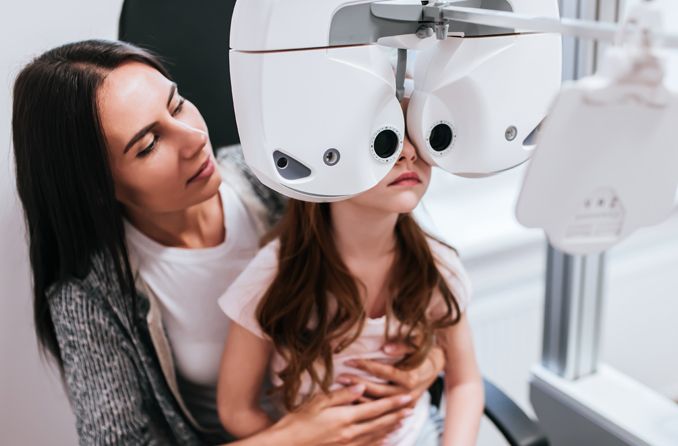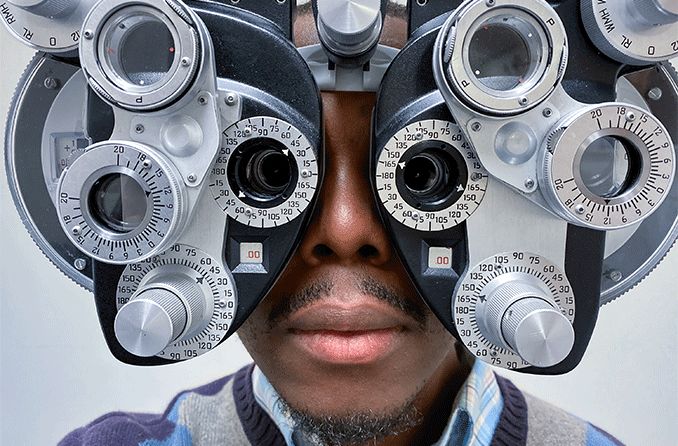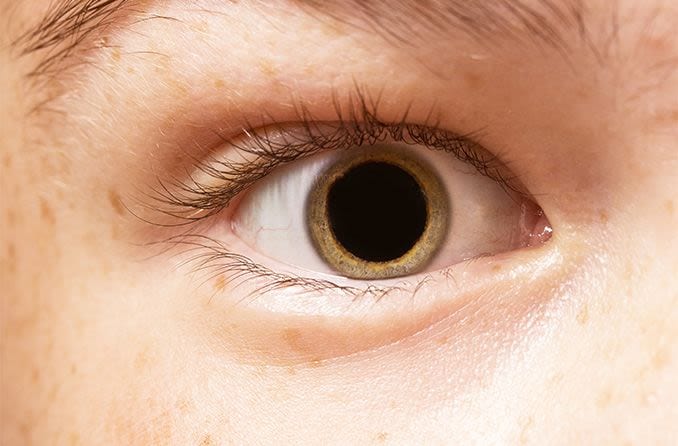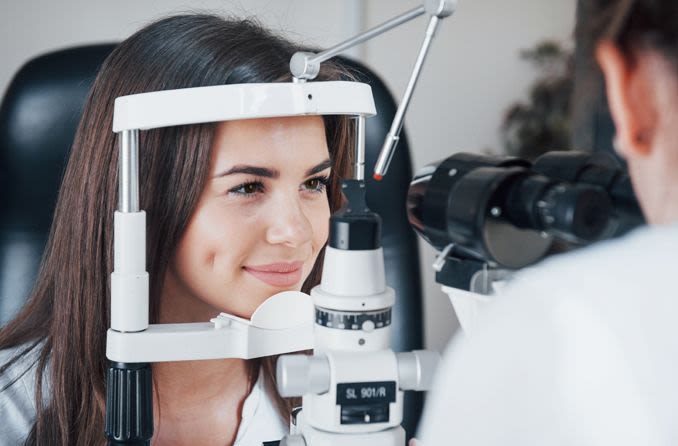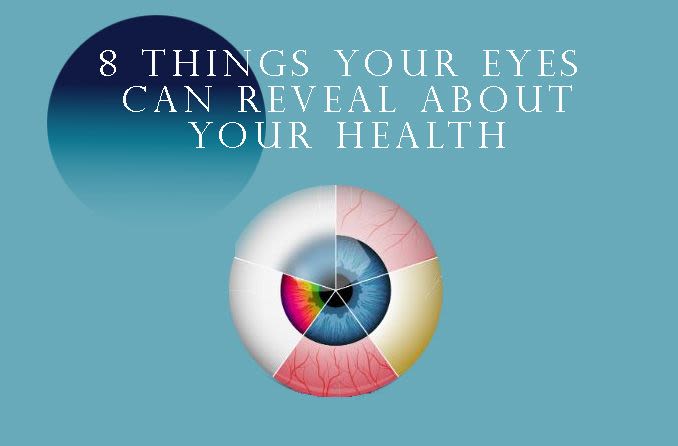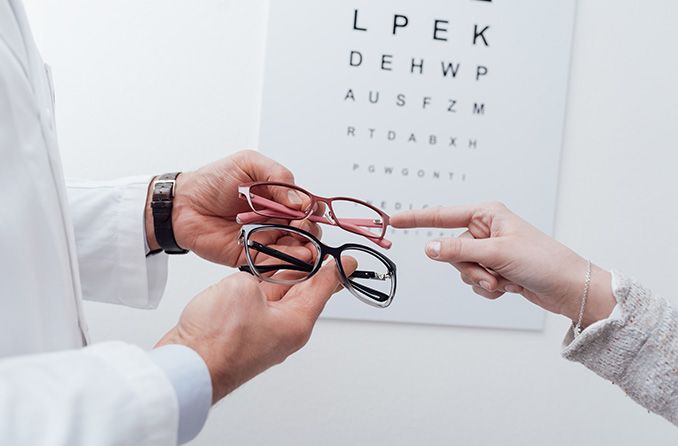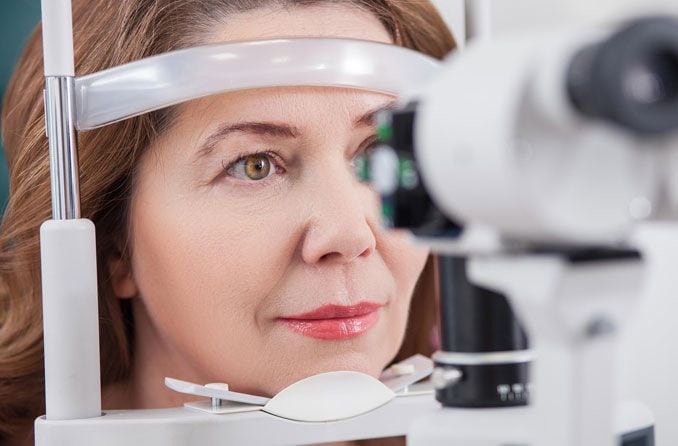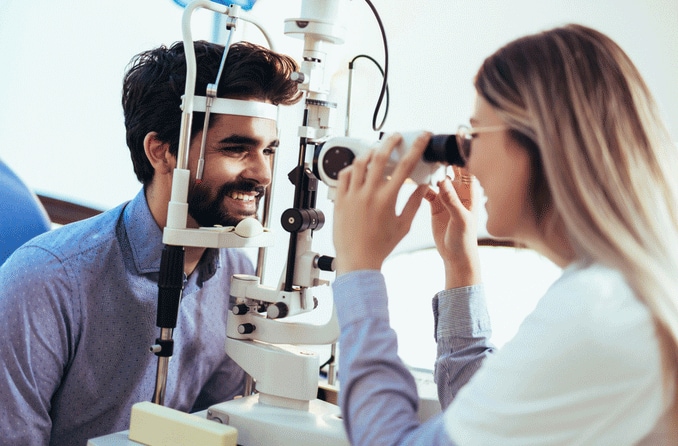What does 20/20 vision mean?
20/20 vision means that you can read a certain row of letters on a standard eye chart from 20 feet away. 20/20 is widely regarded as the measurement of normal visual acuity, the medical term for the clarity and sharpness of your eyesight.
In the United States, visual acuity measurements often come in the form of a fraction that starts with the number “20,” followed by a slash and a second number.
What do the numbers represent?
The first “20” of 20/20 represents the testing distance (20 feet) between you and an eye test chart. The most common eye chart is the Snellen eye chart, which has one big letter at the top (often the letter "E") and rows of increasingly smaller letters underneath it.
The second “20” represents the distance (also 20 feet in this case) that someone with normal vision would be able to read a particular line of letters.
Each row on an eye chart represents a different visual acuity measurement. Your visual acuity is determined by the smallest row you can read accurately from 6 meters away.
Nations vary in how they express visual acuity. Countries that use the metric system often use "6/6 vision" instead of 20/20 vision, since they use meters instead of feet. Italy has a measurement system distinct from other European nations. In Italy, the 6/6 notation is converted to a decimal ratio, with "10/10" representing normal vision.
How can you tell if you have 20/20 vision?
An eye doctor or other trained professional can measure your visual acuity using an eye chart. While you can print your own Snellen eye chart and check your vision at home, it won't replace a comprehensive eye exam or professional vision assessment.
To measure your uncorrected visual acuity, you remove your glasses or contacts and cover one eye. Then, you read the smallest row of letters you can see clearly. Afterward, you repeat the test with the other eye covered.
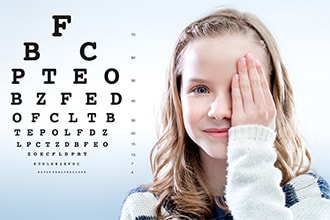
Your visual acuity is based on the smallest row you can read. If you can read the "20/20" row but not the smaller rows below it, you have 20/20 vision.
How many people have 20/20 vision?
About 1 in 3 adults have "natural" 20/20 vision without prescription glasses, contact lenses or any other kind of vision correction.
Around 3 in 4 adults have 20/20 vision with some form of vision correction.
Is anything better than 20/20 vision?
Yes. It’s easy to think that 20/20 vision is the best, but it isn’t. 20/20 simply means the sharpness of your eyesight is normal. Some people can see objects clearly from even greater distances.
For example, someone with 20/15 vision can stand 20 feet away and read letters that someone with 20/20 vision would need to be closer (15 feet away) to read. In other words, 20/15 eyesight is sharper than normal.
What is not as sharp as 20/20 vision?
If the second number in a visual acuity measurement is higher than 20, it means your vision is less sharp than someone with 20/20 eyesight. The higher the second number is, the blurrier your eyesight is without correction.
Two notable measurements — after correction — are:
- 20/40 – The lowest measurement required by most states to get an unrestricted driver’s license.
- 20/200 – If your best eye has this visual acuity measurement even with corrective lenses, you are considered legally blind. This means someone can only read the one large letter at the top of a Snellen chart, even with their glasses or contact lenses.
Why your vision might not be 20/20
Sometimes your eyesight isn’t as sharp as it could be. That can happen for a few different reasons, and an eye doctor can help you find the best way to correct it.
Refractive errors
Most people with worse than 20/20 vision have one or more refractive errors. This means the eye doesn't focus light rays directly or evenly onto the retina in the back of your eye.
The four common refractive errors are:
- Nearsightedness (myopia) – Distant objects look blurry.
- Farsightedness (hyperopia) – Close objects (in severe cases, also faraway objects) look blurry.
- Astigmatism – Objects can look blurry or distorted at all distances.
- Presbyopia – It gets harder to see up close as you get older.
Eye diseases and injuries
Complications from eye injuries and health conditions such as diabetes can affect the sharpness of your vision. Additionally, eye conditions like cataracts, age-related macular degeneration (AMD) and glaucoma can also affect your sight.
Temporary or environmental factors
Sometimes, a temporary problem or flare-up makes your eyesight less sharp for a while. This might include things like:
- Dry eyes
- Eye strain
- Stress and anxiety
- Migraine
- Alcohol consumption
If you normally have 20/20 eyesight, these factors should not cause permanent vision changes. But they could reduce your visual acuity while you are affected by them.
There's more to good vision than 20/20 alone
20/20 vision only tells you how clearly you see at a distance. It doesn't measure how your eyes work in everyday life.
For example, a basic eye chart doesn’t test:
- How well you can see colors.
- Your vision in low light or at night (typically measured with contrast sensitivity testing).
- Your side vision (peripheral vision).
- How well your eyes work together and move (important for depth perception).
- Your eye alignment for a single clear image.
It's good to have 20/20 vision, but other factors can be just as important. An eye doctor can check all these things during a comprehensive eye exam.
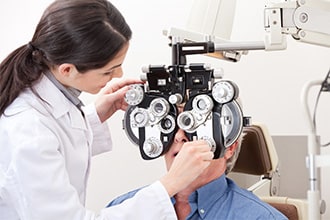
20/20 vision doesn’t always mean your eyes are healthy
20/20 vision is a good start, but it doesn’t guarantee your eyes are healthy. You can have good distance vision and still have an undetected issue that affects the health of your eyes. Some conditions progress slowly without early symptoms, such as:
- Glaucoma – Damage to the optic nerve.
- Macular degeneration – Vision loss in the center of your view.
These conditions can develop quietly over time, even if your eye chart results are normal. By the time your vision is affected, it may be too late to restore what is lost. Routine eye exams give your eye doctor the chance to find issues early and protect your vision for the future.
How to correct or improve vision that isn’t 20/20
The first step toward clearer vision is to see an eye doctor for a complete eye exam. They have the tools and expertise to help you see as close to 20/20 as possible. They can also detect and treat any health conditions that may be affecting your vision.
If needed, an eye doctor can prescribe or recommend different ways to help you see better, such as:
- Prescription eyeglasses or contact lenses
- Prescription sunglasses
- Reading glasses
- Bifocal, trifocal or progressive lenses
- Refractive surgery such as LASIK
- Lifestyle adjustments and healthy habits
During your exam, tell your doctor how well you see during everyday activities. Consider your visual clarity when reading, driving and using digital devices. Mention any changes or discomfort you’ve noticed, along with any other concerns.
Even if your vision is at or near 20/20, a small prescription adjustment could make a big difference in how clearly and comfortably you see every day.

